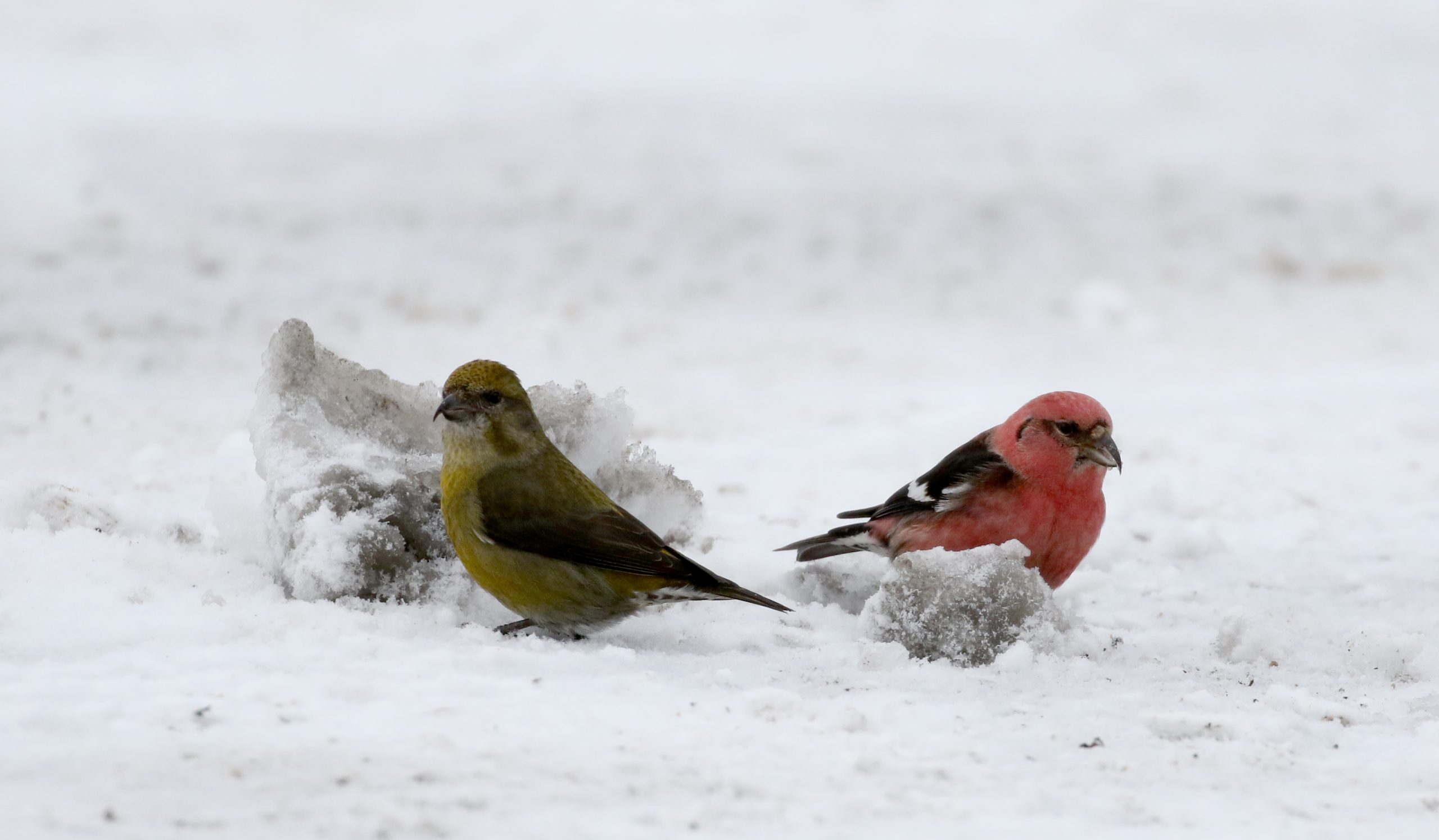By Matthew A. Young and Timothy J. Spahr: This certainly has been an interesting year and an interesting fall. Hopefully the irruption of finches and what the Finch Research Network (FiRN) has been publishing about the irruption, has been a highlight in what has been a difficult year for all. To date, we’ve written about all the finches moving this fall except for the crossbills. Crossbills haven’t disappointed either, and so I guess it’s appropriate that Tim and I team up to write this one.
Crossbills are largely seen as obligate conifer seed specialists, and there’s been two excellent spruce and tamarack cone crops across large sections of the eastern boreal the last four years. And additionally, like with other finches, but to a lesser extent, crossbills will utilize spruce budworm (Jeff Groth pers comm.). These great spruce and tamarack crops, in conjunction with the on-going budworm outbreak across large portions of Quebec and Ontario the last several years, has led to high eastern population numbers in both Red Crossbill and White-winged Crossbill. After the spruce and tamarack seed crop was consumed, the Red Crossbill headed southward into a heavy white pine crop in southern parts of the northeastern States. That conifer seed crop has largely been consumed, and some crossbills have been forced to move out of the northeast the last 4-6 weeks to the south and west.
White-winged Crossbills moved in record numbers at Hawk Ridge in Minnesota in October, and a steady stream of smaller numbers also moved out of the eastern boreal into the Northeast too. Outlier birds have been seen as far south in the east as North Carolina and Kentucky. White-winged also moved in numbers in British Columbia, and numbers have been increasing in the Pacific Northwest States and into the southern Rockies as well.
The vast majority of the Red Crossbills that have been on the move this fall have been Type 10, and they’ve been found to the south in North Carolina, Kentucky, Georgia, and to the west in Wisconsin and Minnesota.
In the western United States, Type 2 have been seen in unprecedented numbers in coastal areas from California to southern British Columbia
While Type 1, our Appalachian Crossbill, does not irrupt in numbers, and is rare along the coast, it has been recorded in very small numbers in coastal areas of Connecticut, New Jersey and Massachusetts.
The Type 4 Red Crossbill seems to be a rare wanderer to the northeast. During the 2017-2018 irruption, Type 4 appeared in numbers in the western Great Lakes, and even bred, in Wisconsin. Multiple birds were noted in the Adirondacks during Winter 2018. Rather surprisingly, Type 4s have staged a small movement to eastern states the past couple months, with birds in Illinois, Cape May, New Jersey (see .07s), Massachusetts, Long Island, New York and even a single as far south as Kentucky.
At Cape May, New Jersey Tom Johnson and Michael O’brien have documented types 1, 2 (see .18s), 3, 4 and 10 making for a great crossbill fall at this historic migratory location.
Red and White-winged Crossbills will continue to move around locally for the next few months in search of the best cone crops. Give your local conifer stands a look! With some luck, and a recording of flight calls, you will be contributing to further understanding of these fascinating species and this historic irruption.
Photo Credits Jay McGowan
FiRN is a nonprofit, and has been granted 501c3 status. FiRN is committed to researching and protecting these birds and other threatened finch species like the Evening Grosbeak and Rosy-finches, and if you have been enjoying all the blogs and identifying of Red Crossbill call types, redpoll subspecies and green morph Pine Siskins FiRN has helped with, please think about supporting our efforts and making a small donation at the donate link below.

